How to Make Your Backpack Lighter: Top Strategies Revealed in 2023
Knowing how to make your backpack lighter enhances comfort, reduces fatigue, and increases mobility during outdoor adventures or everyday activities. Discover the essential techniques for a more enjoyable journey.
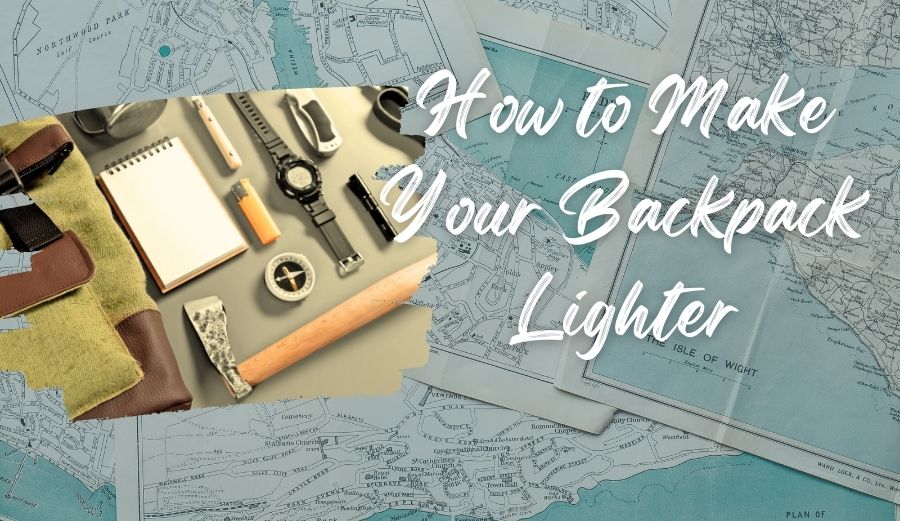
Are you tired of lugging around a heavy backpack that feels like holding you back on your outdoor escapades or daily commutes? What if we told you there’s a game-changing solution?
In our guide on How to Make Your Backpack Lighter, we’re about to unveil a treasure trove of backpacking secrets that will redefine your adventures and simplify your everyday life. Get ready to shed the weight, boost your comfort, and revolutionize the way you pack.
Say farewell to the burdensome backpack and hello to newfound freedom – it’s time to embark on this transformative journey with us.
Table of Contents
ToggleThe Weight-Conscious Backpacker's Philosophy
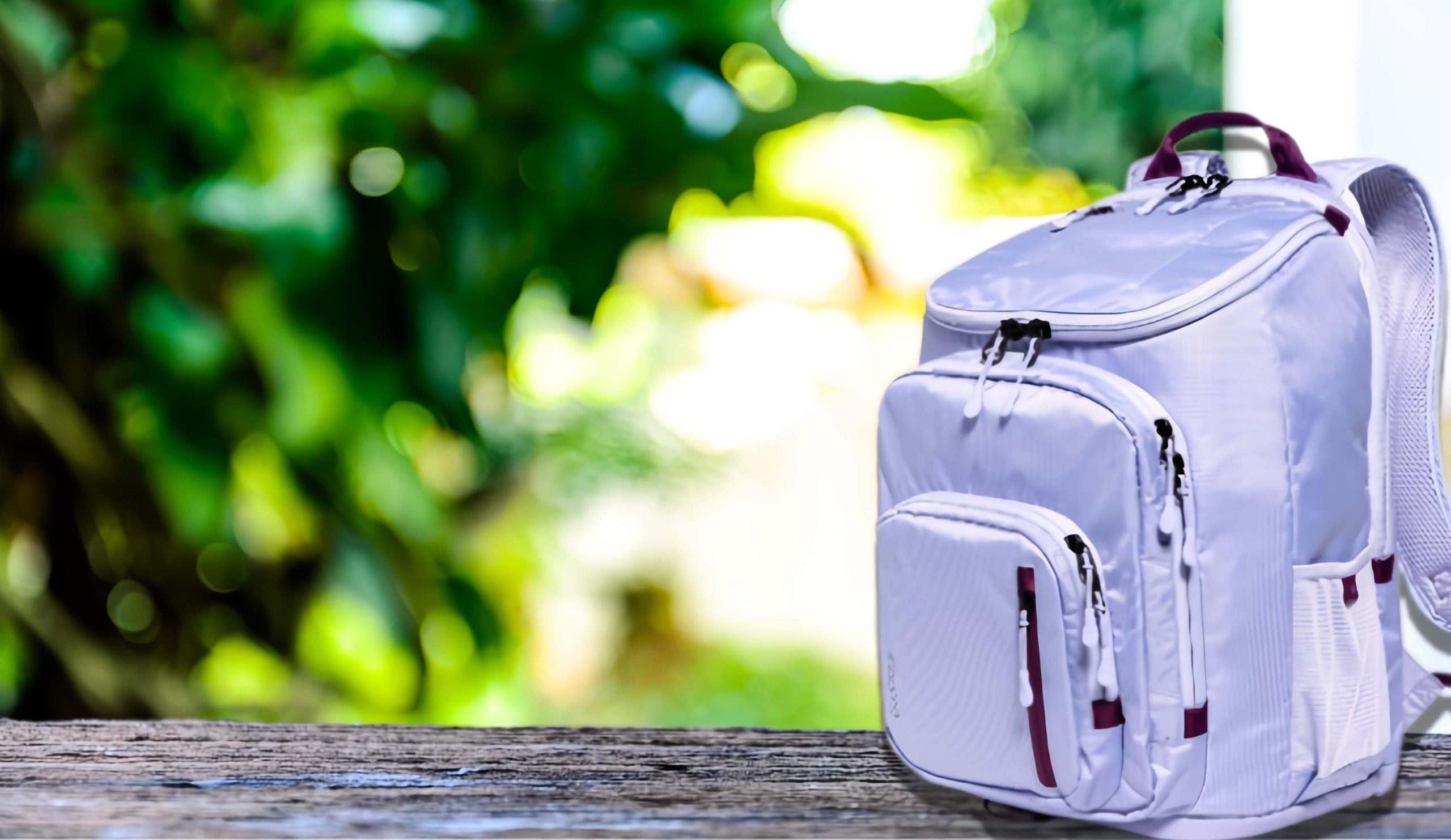
Regarding backpacking, a philosophy stands as the cornerstone of outdoor exploration – the art of packing light. This philosophy isn’t just a matter of preference; it’s a transformational approach that enhances your outdoor experience.
Why Pack Light?
At the heart of this philosophy lies a simple question: Why should you pack light? The answer is multifaceted and extends far beyond convenience.
Unmatched Comfort
Imagine wandering through picturesque trails without the constant strain of a heavy load on your shoulders. Lightening your backpack results in unparalleled comfort, allowing you to relish every step of your journey.
Enhanced Physical Well-being
Reducing backpack weight isn’t just about comfort; it’s also about your physical health. A lighter load minimizes the risk of injuries and strains, ensuring you stay in top shape during your adventures.
Agility and Freedom
Embracing the weight-conscious philosophy grants you a newfound sense of agility. You can easily navigate challenging terrains, savoring the freedom to explore more and worry less about the burden on your back.
In the following chapters, we’ll delve deeper into the strategies and techniques to help you embrace this philosophy, transforming your backpack from a cumbersome burden into a source of comfort and liberation. Prepare to embark on a journey where every ounce counts, and the rewards are immeasurable.
Crafting a Feather-Light School Backpack
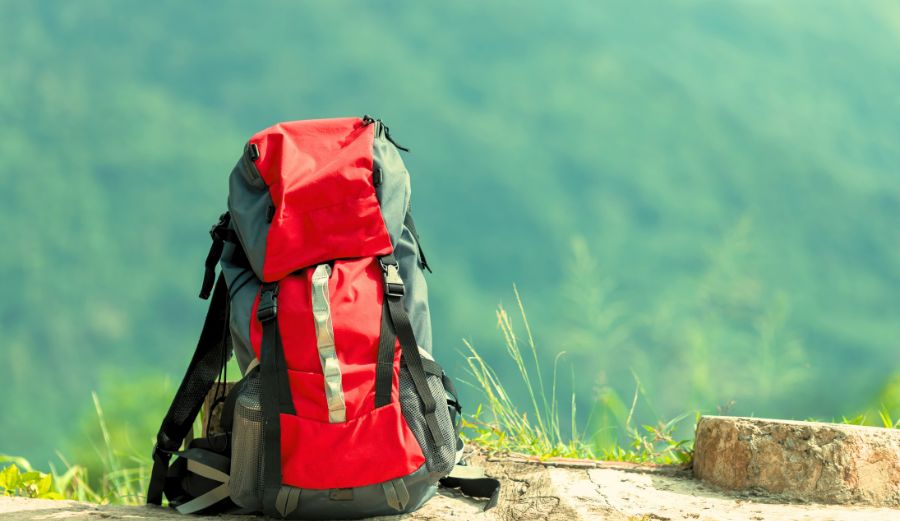
When lightening your school backpack, you’ll be amazed at how a few strategic choices can make a difference. Let’s delve into the art of crafting a feather-light school backpack.
Backpack Selection and Sizing
Choosing the Right Fit: The first step to a lighter school backpack is selecting the proper size and style. Ensure the bag suits your needs without excess space.
Ergonomics for Comfort: Opt for ergonomic designs that improve comfort and balance. A well-fitted backpack minimizes strain and discomfort.
The Science of Load Distribution
Even Load Distribution: Understanding load distribution is critical. Learn how to adjust shoulder, chest, and waist straps for an even weight distribution, reducing fatigue.
Quality Over Quantity
Invest Wisely: Explore the value of investing in a high-quality school backpack. Quality materials and construction ensure longevity and unparalleled comfort.
Lightweight Materials and Innovations
Innovative Materials: Dive into the world of lightweight, breathable backpack materials. Discover waterproof and water-resistant fabrics for added durability.
Organization and Clutter Control
Efficient Organization: Keep your backpack clutter-free with practical strategies for regular cleaning and organization. Carry only what’s essential for your day.
Embracing Digital Efficiency
Digital Advancements: Embrace the digital age by utilizing e-books and electronic planners. Streamline your backpack with technology while staying organized.
Maximizing Storage Options
Unlocking Locker Potential: If you have access to lockers, use them strategically. Learn how to maximize storage space and create a hassle-free daily routine.
Backpacking Bliss: Lightening Your Load on the Trail
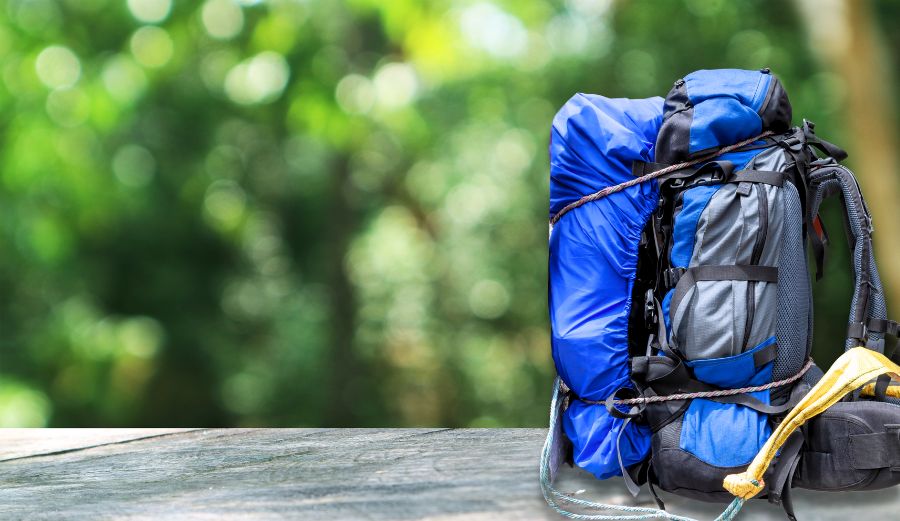
Embark on a journey of backpacking bliss as we uncover the secrets to lightening your load on the trail. Let’s explore how to make your backpacking adventures more enjoyable and effortless.
Choosing the Perfect Backpack
Tailored Selection: Guide readers in selecting the ideal backpack based on the specifics of their backpacking adventures. Discuss considerations like size, frame support, and the allure of ultralight options.
Sleep Soundly, Pack Lightly
Lightweight Slumber: Explore the significance of a light sleep system for a restful night’s sleep in the wilderness. Educate readers on ASTM/ISO ratings and R-value, ensuring their comfort.
Innovative Shelter Solutions
Tent Tactics: Suggest tents that can be pitched using trekking or ski poles, simplifying your shelter setup. Embrace the minimalist approach with tarp setups, perfect for streamlined backpackers.
Streamlined Wardrobe Choices
Minimalist Wardrobes: Advocate for minimalist wardrobe choices and their undeniable advantages. Address exceptions for extended trips or changing weather conditions, offering practical advice.
Digital Transformation on the Trail
Digital Trailblazing: Discourage the burden of carrying physical books and guidebooks. Instead, promote using electronic devices and e-books for entertainment and information.
Water Wisdom: Efficient Hydration
Strategic Hydration: Stress the importance of planning water consumption on the trail. Provide valuable insights into locating and purifying water sources along your backpacking route.
Hydration Innovations: Lightweight Water Containers
Weight-Saving Hydration: Discuss the advantages of collapsible water bottles over traditional options. Recommend specific brands and options to keep your hydration setup lightweight.
Footwear Freedom: Trail Runners vs. Heavy Boots
Lightweight Footwear: Explain the benefits of transitioning to light, comfortable trail runners. Offer guidance on ensuring proper traction and support for your feet.
Minimalist Dining on the Go
Efficient Dining: Encourage eating directly from the cooking pot to save on dishware weight. Highlight the convenience of reducing dishware to a single, versatile item.
Packing Proficiency and Ongoing Evaluation
Smart Packing: Guide backpackers in evaluating the necessity of each item they carry. Emphasize the importance of periodically reviewing and optimizing their gear choices for a lighter, more enjoyable backpacking experience.
Practical Checklists for Efficient Backpacking
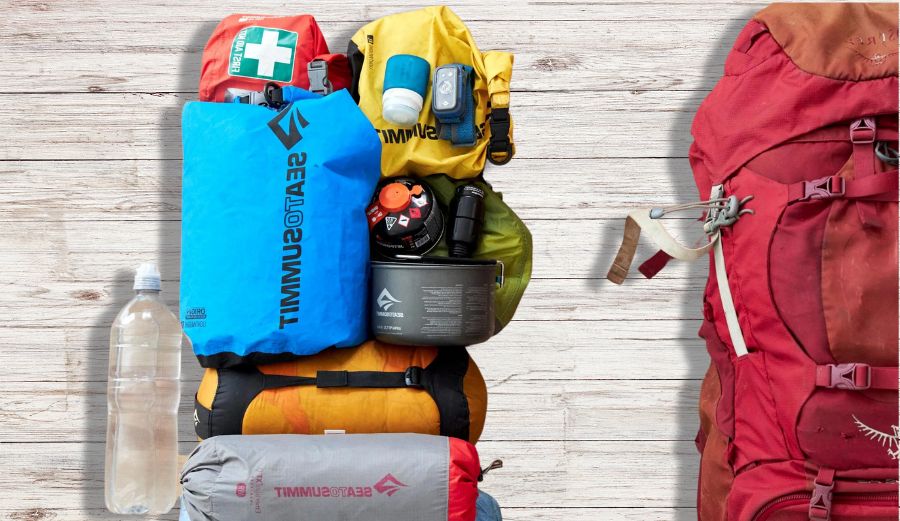
Planning a backpacking trip is an exciting endeavor, but it can quickly become overwhelming without proper organization. That’s where practical checklists come into play.
These downloadable lists are invaluable tools for ensuring you have everything you need while keeping your backpack as light as possible. Let’s explore how these checklists can make your backpacking experience more efficient and enjoyable.
- The Essentials Checklist: Begin with a checklist, including items like shelter (tent or tarp), sleeping gear, clothing layers, food, water purification, and navigation tools. This checklist ensures you cover the basics while minimizing unnecessary items.
- Season-Specific Lists: Backpacking in different seasons requires varying gear. Create season-specific checklists that account for weather conditions. For example, a winter checklist might include extra insulation and snow gear. At the same time, a summer checklist focuses on lightweight clothing and sun protection.
- Ultralight Options: Dive deeper into ultralight backpacking by offering a checklist tailored to minimalist backpackers. This list emphasizes lightweight gear choices, like ultralight sleeping bags, titanium cookware, and compact water filters.
- Food Planning: Include a checklist for meal planning to avoid carrying excessive food. This checklist can help you calculate calorie requirements, plan meals efficiently, and reduce food weight by opting for dehydrated or lightweight options.
- Personalized Checklists: Encourage readers to personalize their checklists based on individual preferences and needs. Some prioritize photography equipment, while others focus on safety gear like a first-aid kit.
Practical checklists are essential companions for backpackers, ensuring they remember crucial items while promoting a minimalist approach to packing. Downloadable and customizable, these checklists simplify trip planning so you can confidently hit the trail, knowing you’re well-prepared and your backpack is as light as possible.
Safety and Environment in Lightweight Backpacking
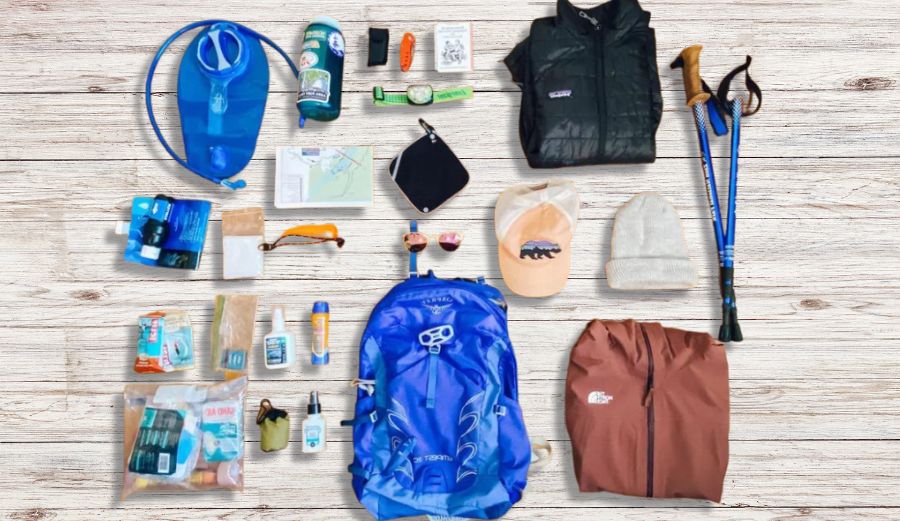
Embarking on a lightweight backpacking journey is a thrilling adventure. Still, it’s vital to prioritize safety and environmental responsibility throughout your trek.
This section delves into the crucial considerations for staying safe and minimizing your ecological footprint while enjoying the outdoors.
- First-Aid Essentials: Lightweight backpacking doesn’t mean skimping on safety. Discuss the importance of carrying a compact yet comprehensive first-aid kit. Highlight essential items like bandages, antiseptics, pain relievers, and personal medications.
- Navigation Tools: Emphasize the significance of navigation tools like maps, compasses, and GPS devices, especially in unfamiliar terrain. Share tips on route planning and ensuring you stay on track to avoid getting lost.
- Responsible Outdoor Ethics: Encourage responsible outdoor ethics, such as Leave No Trace principles. Discuss the importance of leaving natural spaces as you found them, packing out all trash, and minimizing campfire impact.
- Environmental Conservation Practices: Address the impact of backpacking on the environment and ways to minimize it. This may include choosing established trails, following designated campsites, and using biodegradable soaps.
- Emergency Preparedness: Guide readers on preparing for unexpected situations, such as sudden weather changes or injuries. Discuss the importance of informing someone about your itinerary and carrying emergency communication devices like satellite phones or personal locator beacons.
- Wildlife Awareness: Educate backpackers about wildlife safety, including proper food storage to avoid attracting animals to your campsite. Encourage wildlife observation from a safe distance to protect both humans and wildlife.
Integrating safety and environmental considerations into your lightweight backpacking adventure ensures your well-being and contributes to preserving pristine wilderness areas. With the proper knowledge and responsible practices, you can fully enjoy the beauty of nature while minimizing your impact on it.
Ready Set Go!
In conclusion, mastering How to Make Your Backpack Lighter isn’t just a skill; it’s a liberating journey. Armed with the insights shared in this guide, you now possess the tools to shed unnecessary weight, embrace comfort, and enjoy backpacking like a pro.
Remember, every ounce counts, and with determination and intelligent choices, you can transform your backpack into a feather-light companion for all your adventures. Step out with confidence, travel light, and make it happen!
